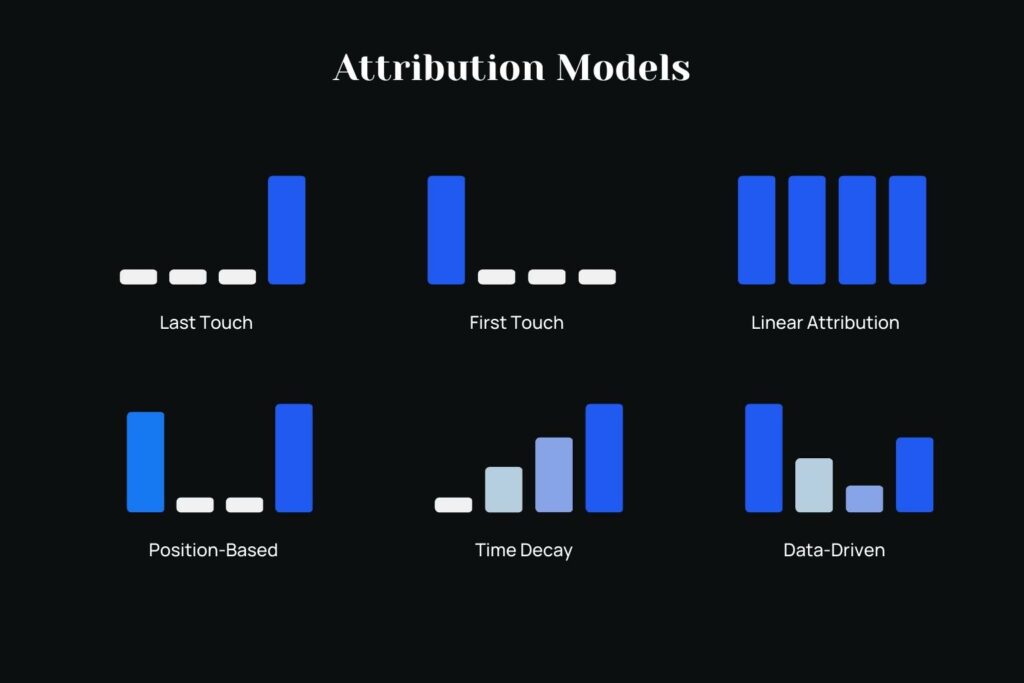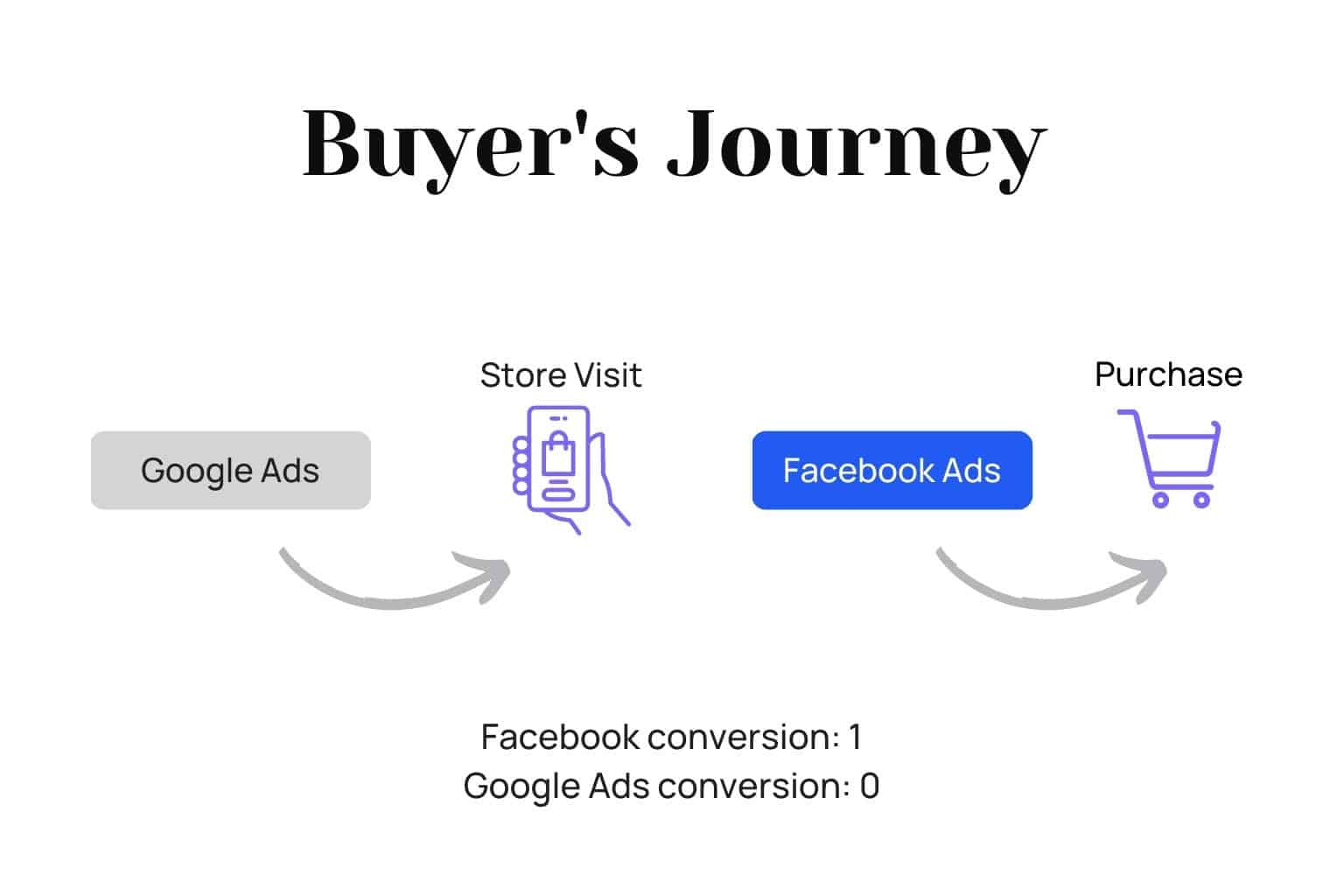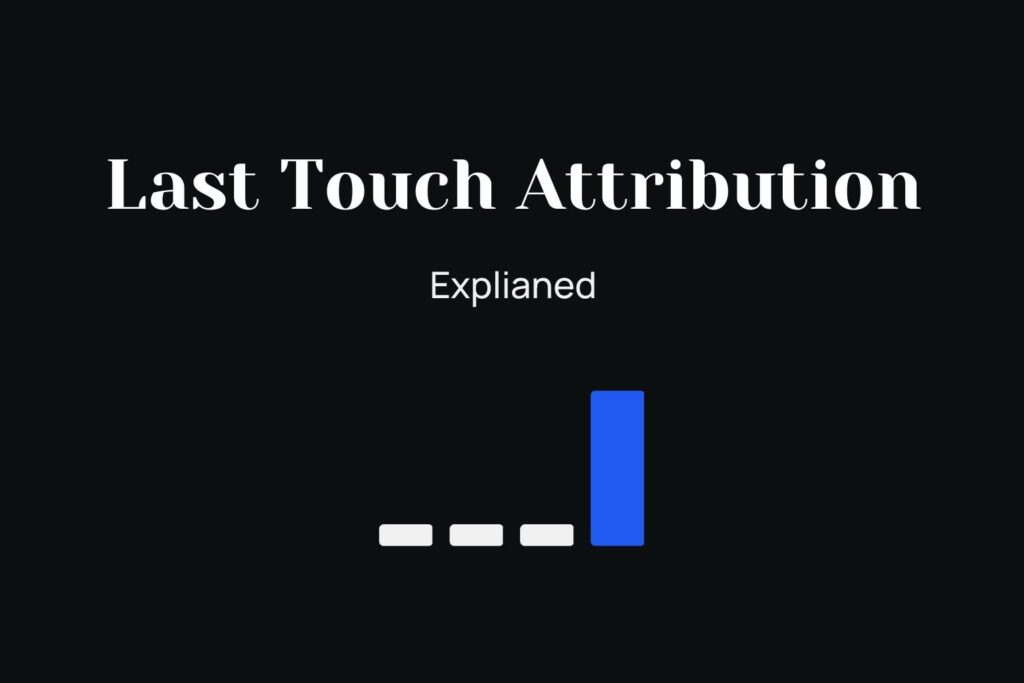Introduction
Attribution modelling is a critical element of digital marketing, enabling businesses to understand how different channels and tactics contribute to the final conversion. The customer journey is a complex web of touchpoints, from organic searches to paid social ads. Understanding the role of each touchpoint in the buyer journey is essential to successful campaign optimisations.
In this article, we'll dive into the Last Touch Attribution Model, one of the most commonly used attribution models in digital marketing. We'll explore its strengths, weaknesses, and real-world examples and compare it to other popular attribution models. By the end of this blog, you'll know when to use this model in your B2B or B2C campaigns.
Why you should care about various attribution models
In the competitive world of PPC advertising, platforms strive to prove their value and capture advertisers' budgets. They do this by using attribution models that credit their platform for a user's actions. This may often result in more paid conversions than recorded in CRM software. Properly understanding and using attribution models is crucial to unlocking the full potential of your marketing campaigns. By evaluating the complete customer journey, you can make informed decisions and optimise your campaign strategy for better ROI.
What is an attribution model?
An attribution model assigns credit to different touchpoints in the customer journey that lead to a conversion. In simpler terms, it's a set of rules that determines how credit for a conversion is attributed to different marketing channels or touchpoints.
An attribution model is a way of measuring the effectiveness of a marketing campaign. It determines how much credit should be attributed to each customer's action.
In short, an attribution model allows you to track how different channels contribute towards your overall goals by assigning value based on their contribution towards those goals.
What are the different kinds of attribution models?

Here is a list of popular attribution models
First Touch Model: Assigns all credit for a conversion to the first touchpoint a user interacts with in their customer journey, such as a social media ad or a Google search.
Last Touch Model: Assigns all credit for a conversion to the last touchpoint a user interacts with before converting, such as clicking on a paid search ad.
Linear Attribution Model: Assigns equal credit to all touchpoints a user interacts with along their customer journey, regardless of when they occurred.
Time Decay Model: Assign more credit to touchpoints closer to the conversion time, with decreasing credit assigned to touchpoints the further they are from the conversion.
Position-Based Model: This model assigns more credit to the first and last touchpoints a user interacts with in their journey. The remaining points are distributed evenly among the other touchpoints.
This model determines how many conversions are attributable to each touchpoint in a customer's journey. The idea behind this type of model is that one conversion can be attributed to one or more touchpoints.
Real-life examples of the last touch attribution model
One real-life example of the Last Touch Attribution Model in action is a B2C e-commerce store. Let's say a visitor sees your product's shopping ad and then clicks on it, but they don't make a purchase. Later, the same visitor sees and clicks on a Facebook ad for the same product. However, this time, an order is placed. In this case, the Last Touch Attribution Model would give credit for the conversion to Facebook ads since it was the last touchpoint before the purchase.

Pros of the last touch model
Simplicity
The Last Touch Attribution Model has a number of benefits for digital marketers. One of its biggest strengths is its simplicity, making it easy to implement and understand. With Last Touch, it's clear which channel was the final step before conversion, allowing marketers to evaluate campaign performance.
Identifying the most effective channels and tactics for driving conversions is also easier with this model.
Cleaner reporting
Up until recently, most platforms were using last-touch as their default attribution. However, Google ads, for example, has rolled out a Data-Driven Attribution model, which changes how your reporting may look like. However, overall if all platforms are set to last-touch, it reduces the chances of duplicate recordings (to a degree).
Focusing on the channel that works
Let's say you have a funnel that is working well for you. However, if you aren't sure about the effect and role of organic or brand awareness campaigns in your final revenue, what you do know if that your Facebook is where most of your conversions happen. Whether this is where clients find you first or last is debatable. However, what could be understood is whatever role other channels are playing, Facebook is the channel that helps with your button line. Therefore, cautiously scaling could be a good idea to test some hypotheses.
Cons of the last touch model
No credit for other channels
While the Last Touch Attribution Model is simple to implement and understand, it has its cons. One of the most significant disadvantages of the Last Touch Attribution Model is that it doesn't credit other touchpoints in the customer journey that may have contributed to the conversion. This can result in an inaccurate picture of the effectiveness of a particular marketing campaign.
Taking the easy way
To illustrate, suppose a user encounters a brand through a YouTube ad. They may or may not click on it at that time. Later, if they search for your brand on Google and you run a brand name campaign, they may click on your ad as it appears above organic search results. As a result, Google Ads may receive conversion credit, even though their role was minimal at best.
Ignoring the role of branding and awareness
Another significant disadvantage is that it ignores the impact of branding and awareness campaigns. For example, if a customer purchases after clicking on a Google search ad, the Last-Touch attribution model would credit the conversion entirely to the ad. However, the conversion may not have been possible without the impact of previous branding and awareness campaigns that made the customer aware of the product in the first place. Therefore, relying solely on the Last-Touch attribution model may result in underinvestment in brand and awareness campaigns.
It doesn't account for multi-device behaviour.
In today's world, customers are constantly switching between devices throughout their buying journey. The Last-Touch attribution model assumes that all the interactions happen on a single device; hence, it doesn't account for cross-device behaviour. This can lead to underestimating the role of channels that customers may have interacted with on another device. For example, a customer may have discovered your product on their phone, researched it on their laptop, and purchased it on their tablet. In this case, the Last-Touch attribution model would only credit the tablet as the last touchpoint while ignoring the importance of the previous interactions on the phone and laptop.
You may also be interested in our five practical tips for outsourcing digital marketing.
When should you use the last touch attribution model?
When using the Last Touch Attribution Model, there are specific scenarios where it makes sense to apply it. For instance, if you're running a direct response campaign, such as lead generation or e-commerce sales, you can use this model to track the channel that directly led to the conversion. The key has a short marketing and sales cycle. The longer a potential customer needs to research and assess your product, the less valuable this model becomes.
Another example is when you have limited data available and you need a quick and straightforward way to track conversions. The Last Touch Attribution Model can give you a brief overview of which channel drives the most conversions. If you have a limited marketing budget, this model can help you focus your spending on channels that directly contribute to your conversions. Doing so allows you to allocate your resources more efficiently and maximise your ROI.
B2C Attribution
B2C businesses often have shorter and less complex customer journeys. In those cases, the Last Touch Attribution Model can effectively measure the impact of individual channels. However, some B2C niches like health and well-being could see longer than average buyer journeys as customers research more before purchasing. In that case, you'd need to pick another model.
B2B Attribution
This model may not be the best fit for B2B businesses, where the buying journey is longer and involves multiple touchpoints. In such cases, use a multi-touch attribution model that considers all channels throughout the customer journey. Some SaaS businesses are among this category; the higher the value of the transaction, the more likely the last-touch model isn't telling the whole truth. We also wrote an article on SaaS Marketing Mistakes; check it out!
The Last Touch Attribution Model can be a valuable tool in specific circumstances. By understanding the strengths and limitations of this model, you can make informed decisions on when to use it and when to opt for a different attribution model.
When should you avoid using it?
This model does have its limitations. One of the main drawbacks is that it only considers the last touchpoint in the customer journey, ignoring the other channels that may have played a crucial role in driving conversions. This can lead to an incomplete and inaccurate understanding of the customer journey and may result in suboptimal marketing decisions.
The Last Touch Attribution Model may not be the best fit for your business if you have long or complex customer journeys. Other attribution modes may provide a more accurate picture of your multi-channel marketing efforts.
Therefore, avoiding using the Last Touch Attribution Model is advisable when a customer journey is particularly complex and involves multiple touchpoints. For example, suppose you have a long sales cycle with a B2B product or service, and prospects are likely to engage with your brand across multiple touchpoints. In that case, the Last Touch Attribution Model may not provide a complete picture of the customer journey. In such cases, other attribution models that consider the entire customer journey are worth exploring.
Pro tip: As a value-add to our readers, I would like to introduce you to Attributer, an exceptional tool for tracking organic and paid UTMs.
As a first-touch attribution UTM tracker, Attributer enables you to track your lead sources all the way down to their landing pages and keywords. By integrating Attributer with various CRM and form builders, you can gain insights into your most valuable prospects' origins and optimise your marketing strategy accordingly.
What attribution model do PPC platforms use?
Google Analytics has a default attribution model of last-touch (non-direct) or last interaction. However, it also provides other attribution models such as Linear, Time Decay, Position-Based, and Data-Driven Attribution. The Attribution Model Report tab in GA allows businesses to see how different attribution models would impact their conversion data. Google Ads, on the other hand, provides various attribution models. Currently, Google Ads' default option is data-driven.
Now that you are here read our blog on PPC for Small Businesses.
Conclusion
In conclusion, attribution modelling plays a vital role in helping businesses gain insight into the effectiveness of their marketing campaigns. For example, the Last Touch Attribution can be useful for marketers to understand the last channel in their customer's journey leading to a conversion. However, it's important to note that no attribution model is perfect; each comes with strengths and weaknesses.
As such, businesses should consider using multiple models to gain a more comprehensive view of their customers' journeys. Additionally, considering iOS 14 and its impact on marketing campaigns, it's crucial to understand different attribution models and their impact.



